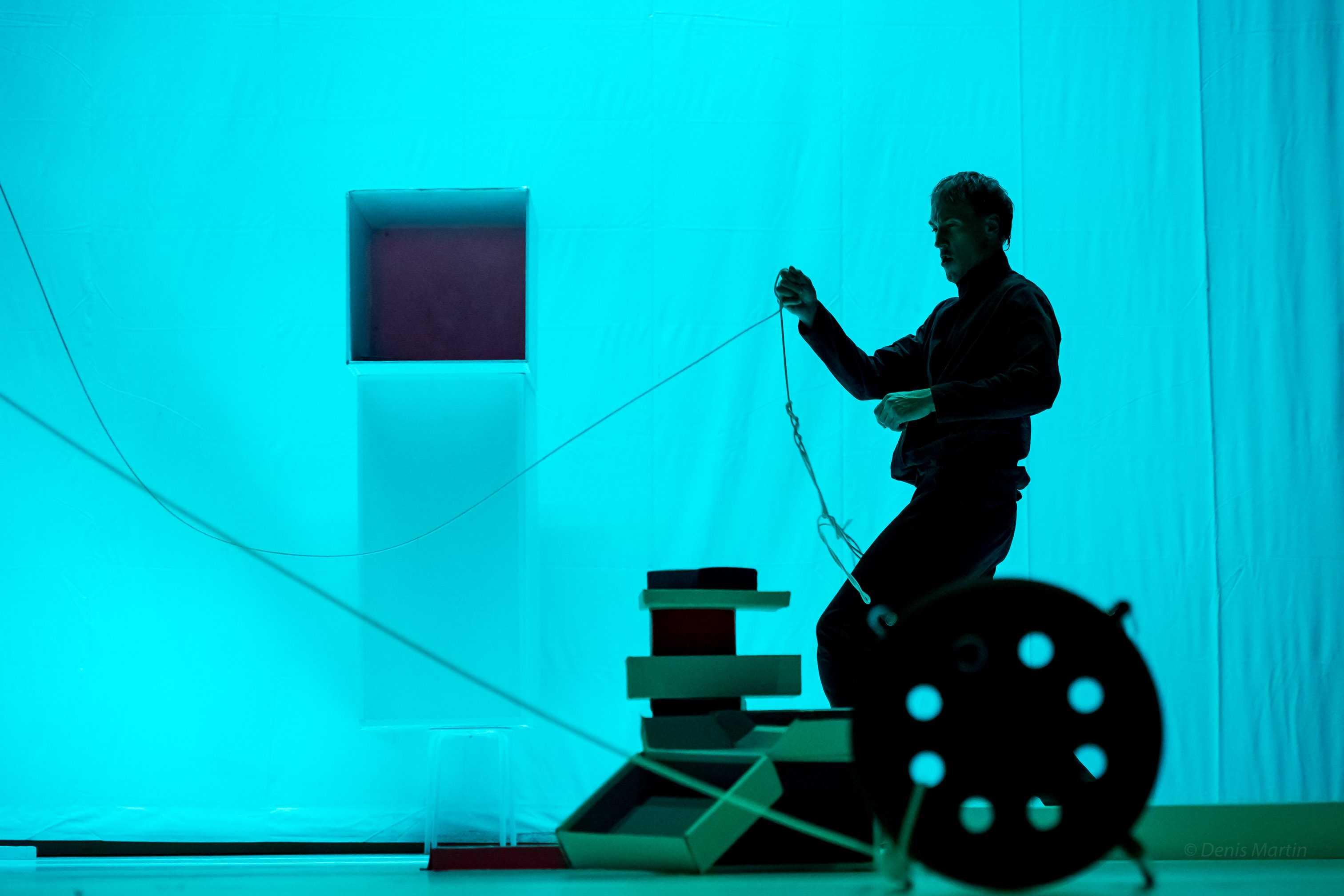Sébastien Provencher and Julia B. Laperrière’s new dance duo explores categorization and chaos
Sébastien Provencher and Julia B. Laperrière met over 10 years ago when they studied dance together at UQAM. While the artists both have their own projects, they have created together sporadically since their university days. They have been working on What Will Come since 2016. At the beginning of the creation process, one of the first objects that inspired them was a cardboard box that they found in a studio where they were rehearsing. The duo developed movement propositions related to explorations they did with the box which led to the start of the dance piece. The project evolved until it became its 2021 version, a dance duo examining the themes of categorization and chaos.
The performance begins with Provencher and Laperrière moving on a stage full of black and white objects. Boxes of different shapes and sizes are meticulously placed around them. The floor and the back wall are white. The identity of the performers is unclear. They seem to be searching around the space, discovering the objects and each other with active gazes.
Laperrière explained that her inspiration for What Will Come came as she was reading a biology philosophy book that explained the development of categorization in the human brain. Her research evolved into reflections with Provencher on modern society’s obsession with categorizing everything. While the artists’ take on this theme is related to gender identity, they believe it can be linked to many different spheres.
“It is probably a survival mechanism to understand the world around us. So, we were interested in questioning the overcategorization of the things that surround us and how sometimes it can prevent us from being open-minded. But we are not judging it either, those categories can also be necessary to our personal emancipation,” said Provencher.
The choreographers explained that they often draw inspiration from the objects that they discover in spaces where they create. “Sébastien and I, we often work with materials, with objects, it is something that stimulates us a lot,” explained Laperrière. For this piece, the boxes that they use influenced the way they move during the performance. “My physicality became the physicality of the box,” explained Laperrière, who added that they looked at how “these objects contaminated [them].”
As the performance goes on, the organization of the setup on stage dissolves gradually. Touches of pink start appearing amongst the boxes and the lighting becomes more colourful. Laperrière explained that a second concept they worked with was entropy. This is a thermodynamic term that examines the notion of disorder and measures the disorganization of a system.
For the duo, this concept created an opposition with the overcategorization they were exploring. They saw the idea of chaos and loss of control in these principles. Provencher explained that they asked themselves “What happens when chaos emerges from this order that was created? Is there a second order that can be created? Is there something that can emerge afterwards?”
This chaos emerges on-stage as the movement changes, becoming more energetic, with the objects being thrown around, displaced, rearranged. For Laperrière and Provencher, this chaos came to life through accidents that occurred on stage. “In What Will Come, the notions of chaos, of disorder, and of accident are important. Therefore, it is important that if an accident happens it is a real accident. We react [to] the moment on stage and that brings the energetic increase, the accumulation,” said Laperrière.
Since these accidents are not planned, unpredictability is an important part of the dance piece. The performers operate with what they call “open compositional structures.” They know the tasks they must accomplish, but the way that they will complete them remains open to improvisation. “We are always looking for strategies to keep the work alive for us and for the audience,” said Laperrière.
The collaborators are also actively involved in the show with the interpreters. Composer Bráulio Bandeira is on stage with them. Bandeira reacts in real time to their movements, so the music is coordinated with the action and participates in its evolution. A similar principle is used for light design. Nicola Dubois adapts the duration of the different light ambiances to the action happening on stage.
This energetic piece is left open to interpretation for the audience to derive their own meaning from it. The choreographers developed occasionally absurd propositions to cultivate an ambiguity around their actions and the place where they happen. The work invites the audience into an unknown universe full of colours and geometric shapes. The dancers progress in this visually striking space towards a new organization of the objects and bodies on stage. For Provencher and Laperrière, the dance piece examines the idea of control. “We try to control our environment, but in fact we never know when our environment will take over,” said Laperrière.
What Will Come is presented at Tangente until Dec. 5. Tickets are available on their website.
Photo courtesy Denis Martin




